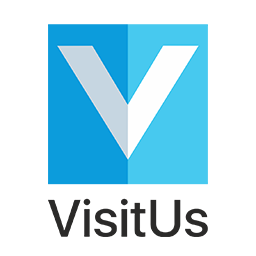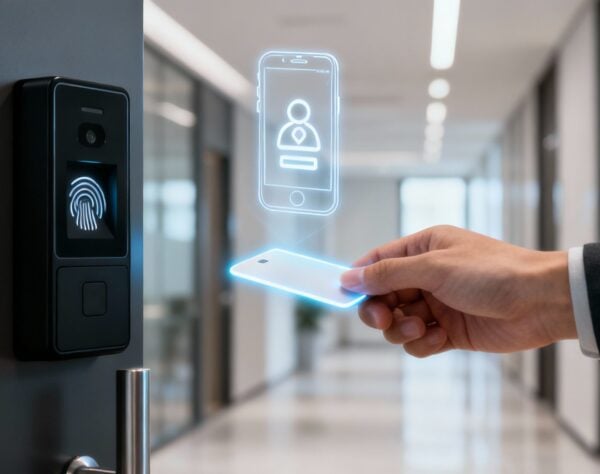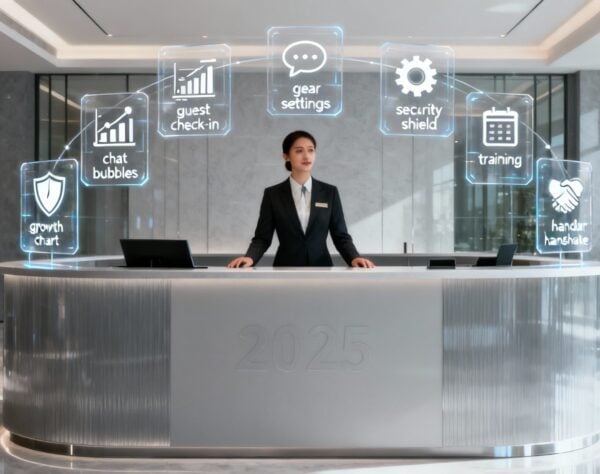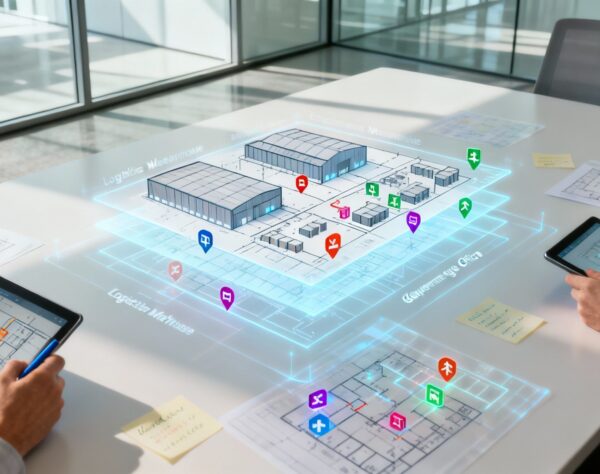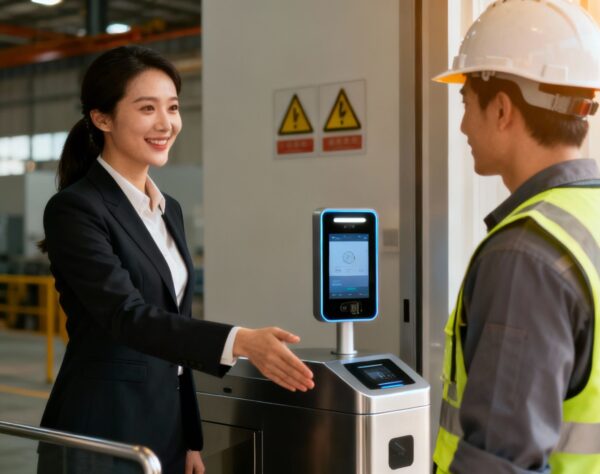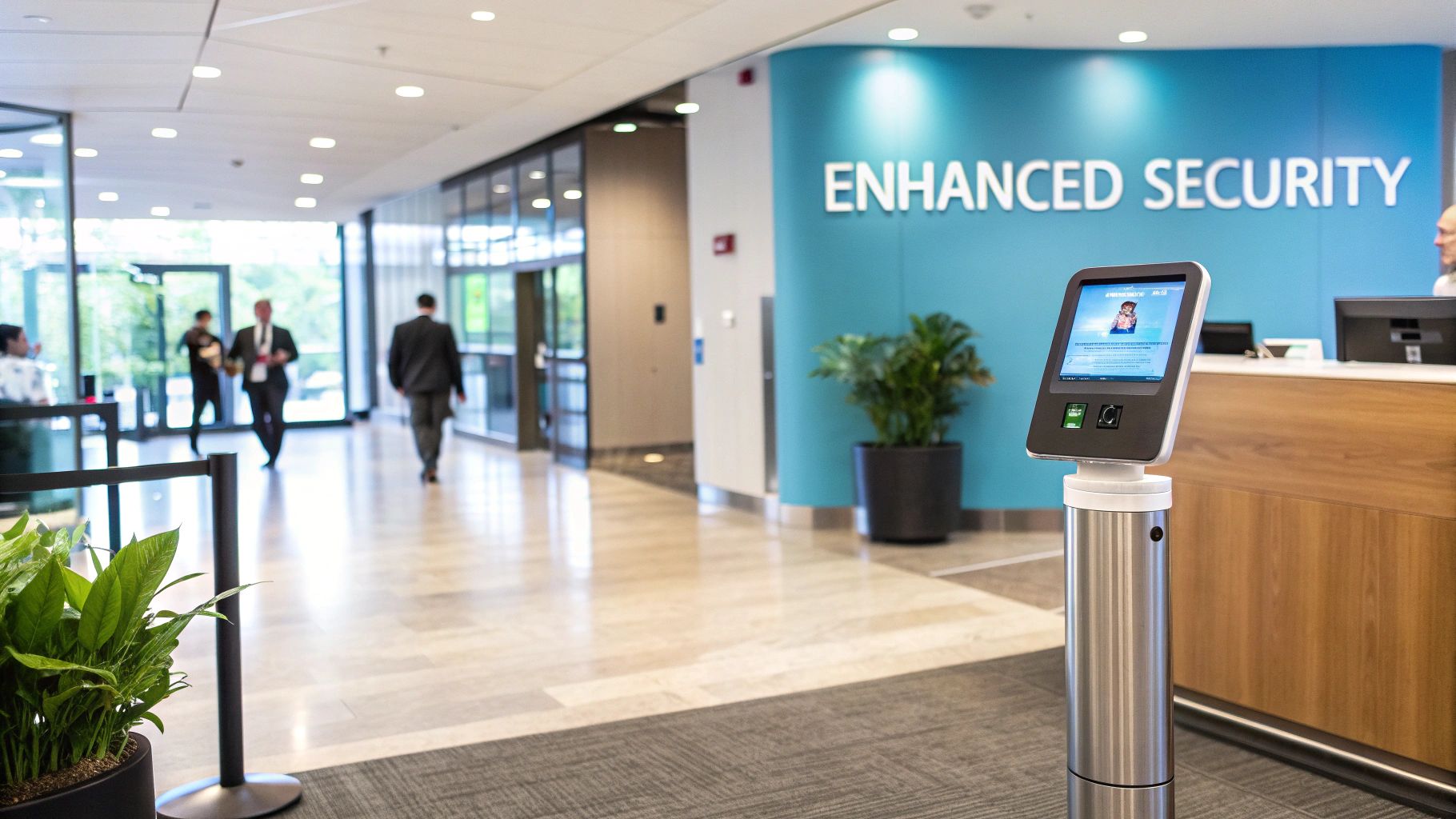
Discover the Power of a Cloud Based Visitor Management System
That paper logbook at your reception desk is more than just outdated—it’s a security risk. A cloud-based visitor management system replaces that messy, insecure paper trail with a smart, digital platform that streamlines how you manage guests, contractors, and new hires.
Think of it as swapping an old paper map for a live, real-time GPS. Both might get you there, but one offers far greater accuracy, security, and efficiency.
Moving Beyond the Paper Logbook
If your current sign-in process involves a pen and an open book, you're exposing your business to serious security and compliance risks. Paper logbooks are a relic. Illegible handwriting makes it nearly impossible to know who was in your building, a nightmare for emergency evacuations. Worse, sensitive visitor information is left in plain sight—a data privacy breach waiting to happen. In fact, 88% of organizations lack adequate protection against data loss.
The Strategic Shift to the Cloud
Switching to a cloud-based visitor management system is a strategic move to address modern operational challenges. It transforms your front desk from a potential weak spot into a hub of efficiency, security, and professionalism.
The entire check-in process becomes automated, guaranteeing every visitor a smooth and secure experience. By leaving outdated paper systems behind, a cloud VMS enables seamless online registration processes, bringing a new level of polish to your front desk.
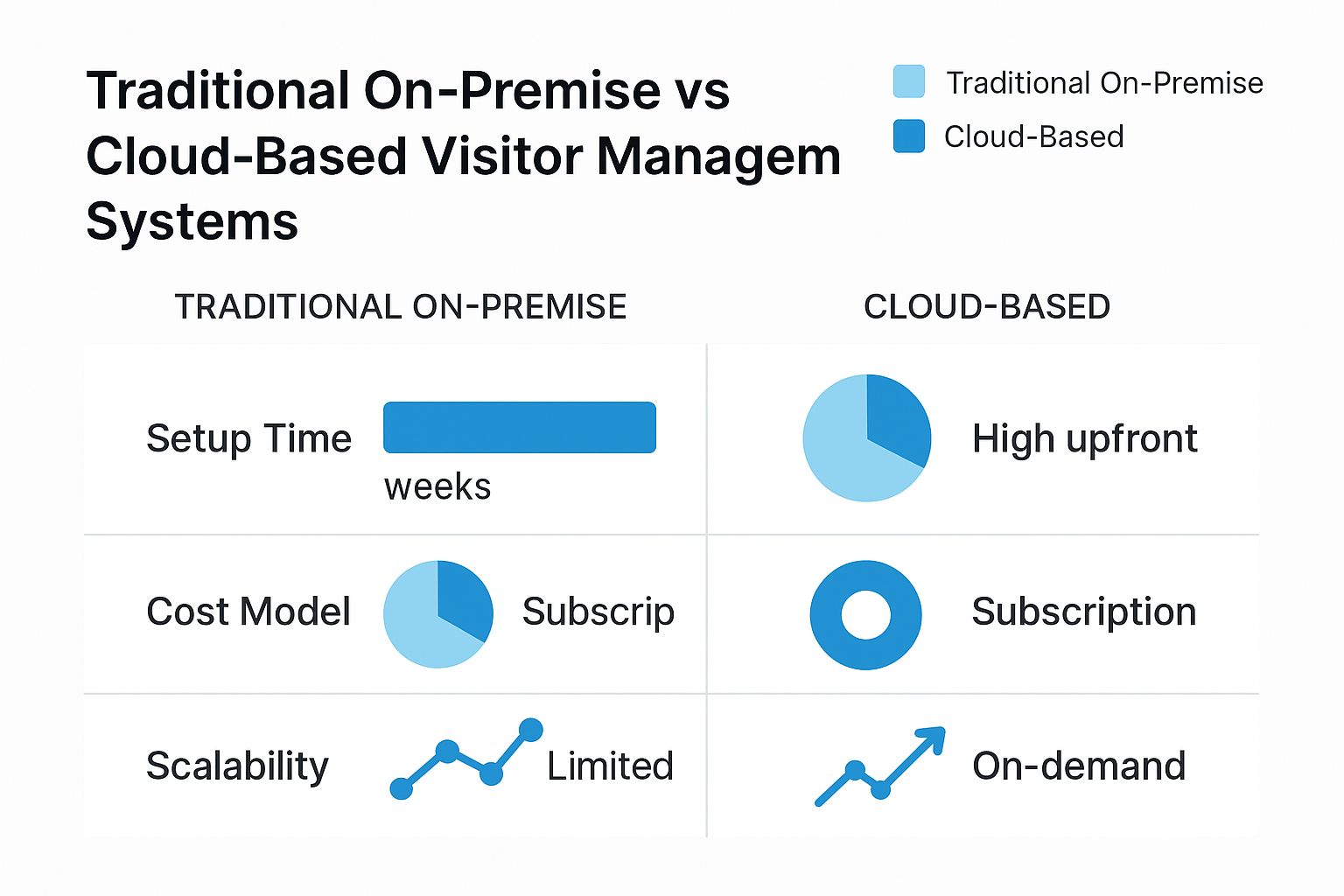
The benefits are clear. Cloud systems offer faster deployment, predictable costs, and can scale with your business far more easily than clunky, on-premise hardware.
To see just how big the gap is between old and new methods, let's put them side-by-side.
Paper Logbook vs Cloud VMS at a Glance
Upgrading from a paper logbook to a cloud-based visitor management system (VMS) isn't just a minor improvement—it's a complete overhaul of your front-desk security and efficiency. This table breaks down the core differences.
| Aspect | Traditional Paper Logbook | Cloud Based VMS |
|---|---|---|
| Security | Low. Data is exposed and easily forged. | High. Encrypted data, access controls, and a secure audit trail. |
| Data Privacy | None. Visitor info is visible to everyone. | Excellent. Information is private and stored securely. |
| Efficiency | Slow manual entry, prone to queues. | Fast. Pre-registration and quick kiosk sign-in. |
| Accuracy | Poor. Relies on illegible handwriting. | Perfect. Digital capture ensures accurate, readable records. |
| Emergency Use | Unreliable. Difficult to access and read. | Instant. Real-time evacuation lists accessible from any device. |
The takeaway is simple: a cloud VMS provides the modern security, professionalism, and operational control that a paper book simply cannot match.
A Market Driven by Modern Demands
This rapid move away from paper is shaking up the market. The global visitor management system (VMS) industry is booming, projected to jump from $1.87 billion to about $2.18 billion in just one year.
That incredible 16.6% compound annual growth rate (CAGR) isn't just a random number. It's fueled by a growing need for better security, with 68% of business leaders feeling that their cybersecurity risks are increasing. This, combined with complex regulations and a universal desire for greater efficiency, is driving the shift to the cloud.
Ultimately, leaving the paper logbook behind is about reducing risk and building a more resilient, professional organization. It’s about creating a welcome that doesn't compromise on safety.
Strengthening Security and Ensuring Compliance
In any business, security and compliance are the foundation of a trustworthy operation. A cloud-based visitor management system acts as a digital fortress, transforming your front desk into a solid line of defense. It’s about actively managing risk and eliminating the headache of legal requirements.
The moment a visitor checks in, the system creates an immediate, tamper-proof digital record. This clean, time-stamped history of every person who enters your facility is invaluable for regulatory audits and internal investigations.

This shift to digital accountability is a big deal. The global market for these systems is expected to balloon from about USD 1.8 billion to nearly USD 6.9 billion in the next ten years. This growth is driven by the increasing focus on physical security and data protection, especially in regulated fields like healthcare and finance.
Mitigating Risk in Real Time
A major security benefit is the ability to screen visitors against internal watchlists automatically. The system quietly flags unauthorized individuals, such as disgruntled former employees or contractors who failed a safety check, preventing them from gaining access. This real-time screening adds a crucial layer of protection, turning a security blind spot into a proactive defense without creating an unwelcoming environment.
A VMS is a powerful tool that works hand-in-hand with your company emergency action plan, ensuring your security protocols are robust and consistently enforced.
Automating Data Privacy and Compliance
Navigating data privacy laws like GDPR can feel like a minefield. A paper logbook, with names and details left open on the counter, is a compliance nightmare. A cloud-based visitor management system turns this liability into a simple, automated process.
These systems are built to collect visitor information securely, store it in encrypted databases, and ensure only authorized personnel can access it. This immediately solves the privacy problem of paper-based methods.
A VMS also simplifies data retention policies. You can set the system to automatically delete visitor data after a set period, automating the "right to be forgotten" and turning a complex legal rule into a simple setting. The system handles consent by displaying your privacy policy during check-in, creating a clear record of compliance. Making the right choice is crucial, and our guide on how to choose a visitor management system can help pinpoint the features you need.
Why Cloud Architecture Is a Game Changer
What makes the "cloud" part of a cloud-based visitor management system so significant? It’s the difference between a static paper map and a live, satellite-guided GPS. One is outdated the moment it's printed; the other is dynamic, always current, and accessible from anywhere.
On-premise systems tie your security to a physical server, creating a single point of failure and a logistical headache. In contrast, cloud architecture frees your visitor management, turning it into a flexible tool that adapts to your business needs—not the other way around.
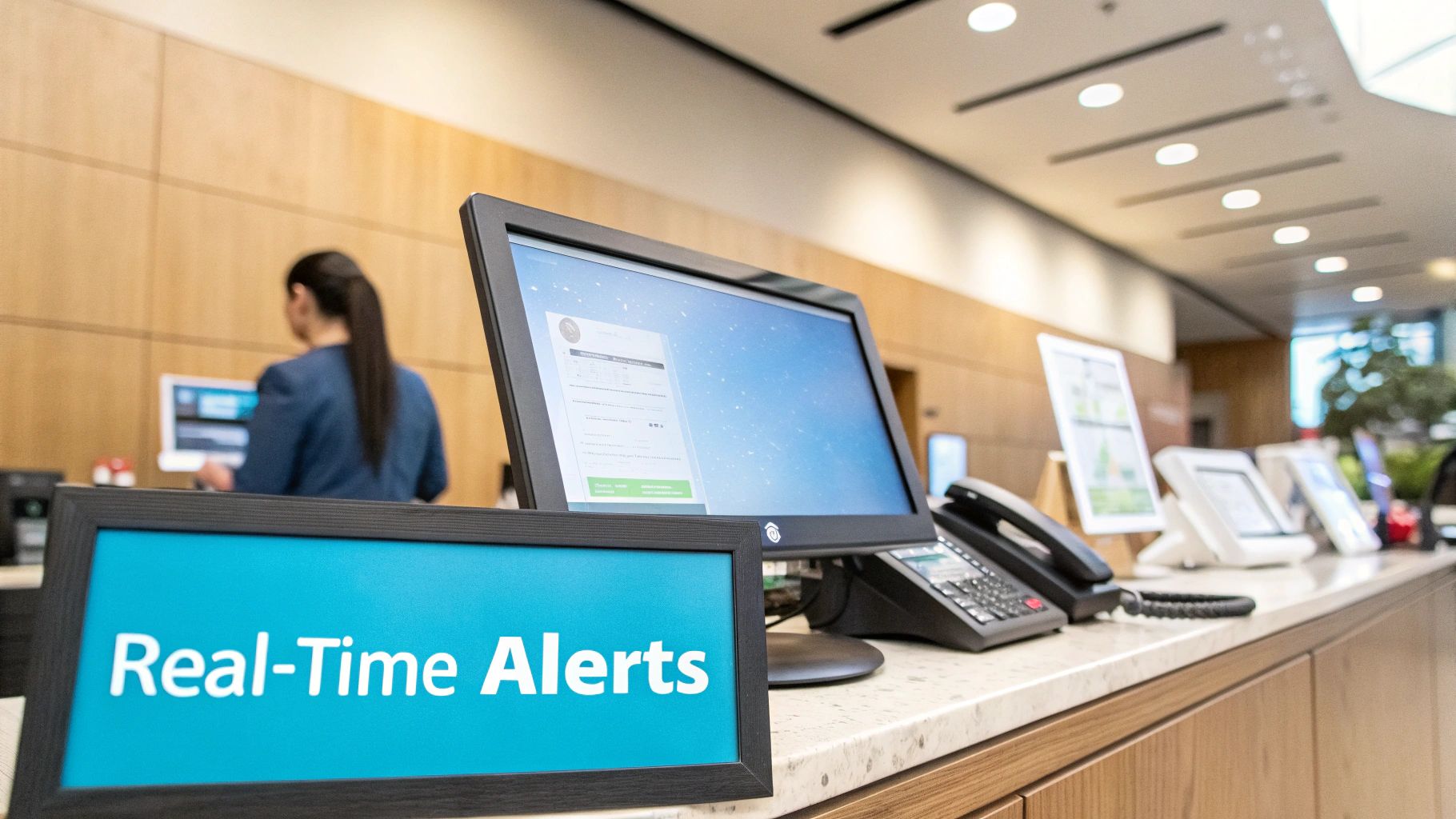
Unlocking Ultimate Scalability
Imagine opening a new office. With an on-premise system, this means buying new servers and sending IT staff for installation. With a cloud-based system, you simply add the new location to your central dashboard.
This effortless scalability is a game-changer for growing businesses. You can manage visitor protocols for one front desk or a hundred global sites from a single interface. This centralized control ensures consistent branding, uniform security policies, and simplified management, saving significant time and IT resources.
Achieving a Lower Total Cost of Ownership
The financial case for the cloud is incredibly strong. Traditional on-premise solutions come with high upfront costs for hardware and ongoing expenses for maintenance and IT staff. A cloud-based visitor management system uses a subscription model, replacing large capital expenditures with a predictable operating expense. Your provider handles server maintenance, security patches, and hosting, dramatically lowering your total cost of ownership.
To get a better handle on the core components of these platforms, you can check out our detailed guide on what is a visitor management system.
Future-Proofing with Built-In Agility
In today's business world, agility is essential. A key benefit of cloud architecture is that your system never becomes obsolete. The provider automatically pushes out updates for security patches and new features, so you're always using the latest, most secure version without lifting a finger. This continuous improvement cycle future-proofs your investment. You can see similar advantages with tools like cloud-based security camera systems.
The industry is quickly moving in this direction. Cloud-based systems are on track to capture roughly 63.5% of the global market share, thanks to benefits like centralized data and superior scalability.
This trend is accelerating as government mandates push for compliance with frameworks like NIST 800-53, making cloud-native architecture a necessity. When you choose a cloud system, you're not just buying a product; you're investing in a platform built for the long haul.
Boosting Efficiency and Enhancing Your Brand
While enhanced security is a primary driver, the benefits of a cloud-based visitor management system extend far beyond the front door. It’s a powerhouse for streamlining operations and sharpening your brand image.
A clunky, paper-based sign-in process suggests disorganization. In contrast, a quick, automated check-in creates a professional welcome that tells visitors your company is modern, efficient, and values their time.
Reclaiming Your Most Valuable Asset: Time
Your administrative staff will immediately reclaim valuable time. Research shows that office workers can lose up to 559 hours per year on administrative tasks like signing in guests and notifying hosts.
A cloud VMS automates this entire workflow. Visitors can pre-register, dramatically slashing lobby wait times. Upon arrival, a quick QR code scan is all it takes to sign in, print a badge, and notify their host. This simple change frees up your front-desk team to focus on high-impact work.
This isn't just a minor tweak. It's a strategic shift. When your admin staff aren't bogged down by manual data entry, they can provide a better visitor experience and contribute to a more positive workplace.
This reclaimed time translates into real cost savings and improved staff morale. To see where this is all heading, check out our insights on the future of visitor management trends to watch.
Crafting a Flawless Brand Experience
Your brand is the sum of every interaction someone has with your company. A messy lobby can tarnish your reputation before a meeting even begins. A cloud-based visitor management system helps you deliver a consistently professional and polished welcome.
From customized welcome screens and clear instructions to professional, branded visitor badges, every detail is managed. These touches create an image of a company that is tech-forward, secure, and cares about the visitor experience. It matters—a recent survey found that 86% of buyers will pay more for a great customer experience, which often begins the moment they step into your office.
This positive first impression influences everything from client deals to attracting top talent. It shows you invest in creating a great environment for everyone.
How a VMS Solves Problems in Your Industry
The true value of a cloud-based visitor management system is its ability to solve specific, real-world problems across diverse industries. A factory floor has different challenges than a corporate office or a healthcare facility, but a flexible VMS adapts to them all.
Let's look at how this smart automation solves unique operational headaches.
Precision and Safety in Manufacturing
In a manufacturing plant, the front desk is the first line of defense for site safety. A stream of contractors, drivers, and auditors must be managed, and a paper logbook is a significant safety risk.
A cloud VMS enforces safety rules before anyone enters the production floor. Contractors can be required to watch a safety video and complete a quiz, ensuring 100% compliance with training. The system can print badges that clearly identify a visitor's role and access duration, helping prevent them from entering restricted areas. For delivery drivers, pre-registration and QR code scanning streamline logistics, keeping your supply chain moving without delays.
This level of control is crucial. An untrained contractor is a massive liability. A cloud VMS builds digital guardrails to ensure every person on-site is properly checked in and aware of the risks.
Reinforcing the Brand in the Corporate World
For a corporate headquarters, the visitor experience is a direct reflection of your brand. A cloud-based visitor management system projects an image of a modern, organized, and tech-savvy company.
The benefit is twofold: it improves front desk operations while enhancing your brand. A smooth check-in tells a visitor that your company is efficient and respects their time, which can impact everything from closing a deal to recruiting top talent.
Imagine a client arriving for a meeting. Instead of an awkward wait, the visitor signs in on a branded tablet. Instantly, their host receives a notification on Slack or Microsoft Teams. It's a polished, professional interaction that sets a positive tone.
This diagram shows the visitor's journey from start to finish, highlighting how automation creates a structured and efficient experience for every guest. The key takeaway is that a digital system creates checkpoints and sends notifications that are simply impossible to do with a pen and paper.
Protecting Privacy in Healthcare Settings
In hospitals and clinics, visitor management is about patient privacy and strict compliance. A paper logbook is a blatant HIPAA violation waiting to happen.
A cloud VMS is critical for securing this data. All visitor information is stored in an encrypted database, accessible only to authorized staff. You can also add a health screening questionnaire to the check-in process and maintain a clear, auditable log for contact tracing. These are just a few of the 5 benefits of a visitor management system that are especially important in these sensitive environments. By automating these rules, a VMS helps protect your most vulnerable people while providing the proof of compliance regulators demand.
Understanding the Return on Your Investment
A cloud-based visitor management system is not just an expense—it’s a strategic investment that pays for itself. The value comes from a combination of hard cost savings and invaluable strategic benefits that strengthen your entire operation.
Automating the check-in process frees up front desk staff for more valuable tasks. This recovered time translates directly into productivity gains and lower labor costs.

Calculating Tangible Returns
The ROI is evident in the numbers. Automating check-in recovers hundreds of administrative hours annually. Eliminating physical supplies like paper and ink provides monthly savings. Most importantly, a VMS helps you avoid crippling fines for non-compliance with data privacy regulations.
A cloud VMS provides an automated, auditable trail for every person who enters your facility, drastically reducing the risk of a compliance failure. This isn't just a security feature; it's a financial shield.
The Invaluable Strategic Advantages
Beyond the numbers, a cloud-based visitor management system delivers powerful strategic benefits. A stronger security posture, built on real-time screening and controlled access, protects your people and property, building trust with employees and clients.
Don’t forget your brand. A smooth, professional check-in experience makes a fantastic first impression. It signals that your company is modern, efficient, and respects visitors' time. This positive brand image influences everything from landing new clients to attracting top talent. This technology is a powerful engine for security, efficiency, and growth.
Of course, moving to any new system brings up a few questions. To help clear things up and give you confidence in making the switch, we’ve put together answers for the things people ask us most about cloud based visitor management systems.
Is Visitor Data Secure in the Cloud?
Absolutely. Reputable cloud VMS providers use enterprise-grade security, meaning data is encrypted both in transit and at rest. A secure cloud system is a massive upgrade from a paper logbook and is designed to help you meet data privacy laws like GDPR. It’s simply a more secure and compliant way to handle visitor information.
How Difficult Is the Setup and Integration?
It’s surprisingly straightforward. Most cloud VMS platforms are designed for rapid deployment. Setup typically involves configuring settings on a web dashboard and placing a kiosk, like an iPad, at your front desk.
The real win is how little it demands from your IT team. Many systems offer slick integrations with tools you already use, like Slack or Microsoft Teams, creating a connected workplace without technical headaches.
Can a Cloud VMS Handle Multiple Locations?
Yes, and this is where a cloud based visitor management system truly shines. From a single dashboard, you can manage visitor policies, monitor security, and update watchlists across all your sites.
This provides two huge advantages:
- Consistent Security: Every location follows the same security rules, eliminating weak links.
- Uniform Branding: A polished, professional welcome is delivered to every visitor, no matter the office.
This level of consistency is nearly impossible with disparate systems or paper logbooks. For any growing company, this unified control is a game-changer.
Ready to turn your front desk into a powerhouse of security and efficiency? VisitUs offers a secure, scalable, and easy-to-use cloud-based visitor management system that strengthens your compliance and boosts your brand. See how we can help your organization by exploring our solutions.
